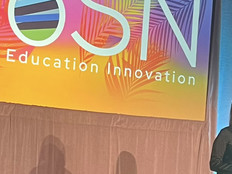6 Steps for a Successful E-Rate Application
Applying to E-rate is a multistep process. To succeed, applicants must plan and multitask well, meet deadlines and keep good documentation.
The application process is a year-round effort that requires applicants to juggle several years of funding simultaneously. For example, a district could answer questions from the current application while it processes reimbursements from a previous year and makes plans for next year's application.
To be considered for the 2018 funding cycle, schools and districts must submit their funding requests sometime between January and May. Before 2015, the filing deadlines were predominantly in February and March, but for the past three funding cycles, the deadlines have been in April and May. The Schools and Libraries Program of the Universal Service Administrative Company (USAC), which manages E-rate for the Federal Communications Commission, will announce the exact dates for 2018.
Here are six steps in the application process that require close attention:
SIGN UP: Get more news from the EdTech newsletter in your inbox every two weeks!
Step 1: Open a Competitive Bid Process
File Form 470 to start the competitive bid process. Applicants must describe the specific services and technologies they seek. Once filed, applicants can solicit bids.
Step 2: Honor the 28-Day Waiting Period
After filing Form 470, schools and districts must wait 28 days before reviewing bids. When choosing a provider or vendor, applicants must choose the most cost-effective bid. Though price must be the primary factor, the FCC allows applicants to consider other factors, such as whether the product integrates with existing infrastructure and whether the vendor provides local support.
Step 3: Submit Signed Contracts and Form 471
After schools select their service providers and vendors, they must have signed contracts before submitting Form 471. The form requires documentation that details the cost, the specific products and services schools want to purchase and where they will be deployed.
Step 4: Be Responsive During the Application Review
USAC reviews E-rate applications through a process called Program Integrity Assurance. If the PIA raises questions or finds problems, such as missing documentation, applicants must respond within 15 days. If they don’t, the PIA may deny funds, says DeLilah Collins, the E-rate and special projects coordinator for Colorado.
Step 5: Receive the Funding Decision
Once applications are reviewed, USAC will issue a funding commitment decision letter. If the project is approved, schools must submit Form 486 before USAC makes payments. With Form 486, schools must confirm the start date of services and that the school complies with the Child Internet Protection Act (CIPA).
Step 6: Invoice USAC
Applicants can submit invoices in two ways. Applicants that pay their service provider or vendor in full can get reimbursed directly. First, they file a Form 498 to provide banking information to USAC. Then they fill out Form 472, Billed Entity Applicant Reimbursement (BEAR), to get paid.
The other invoicing process is the service provider invoicing (SPI) method, in which the service provider handles the reimbursement process with USAC. Schools just pay the service provider a discounted bill for the services.
For more information on the E-rate process, check out the CDW whitepaper "A Guide to E-rate."







